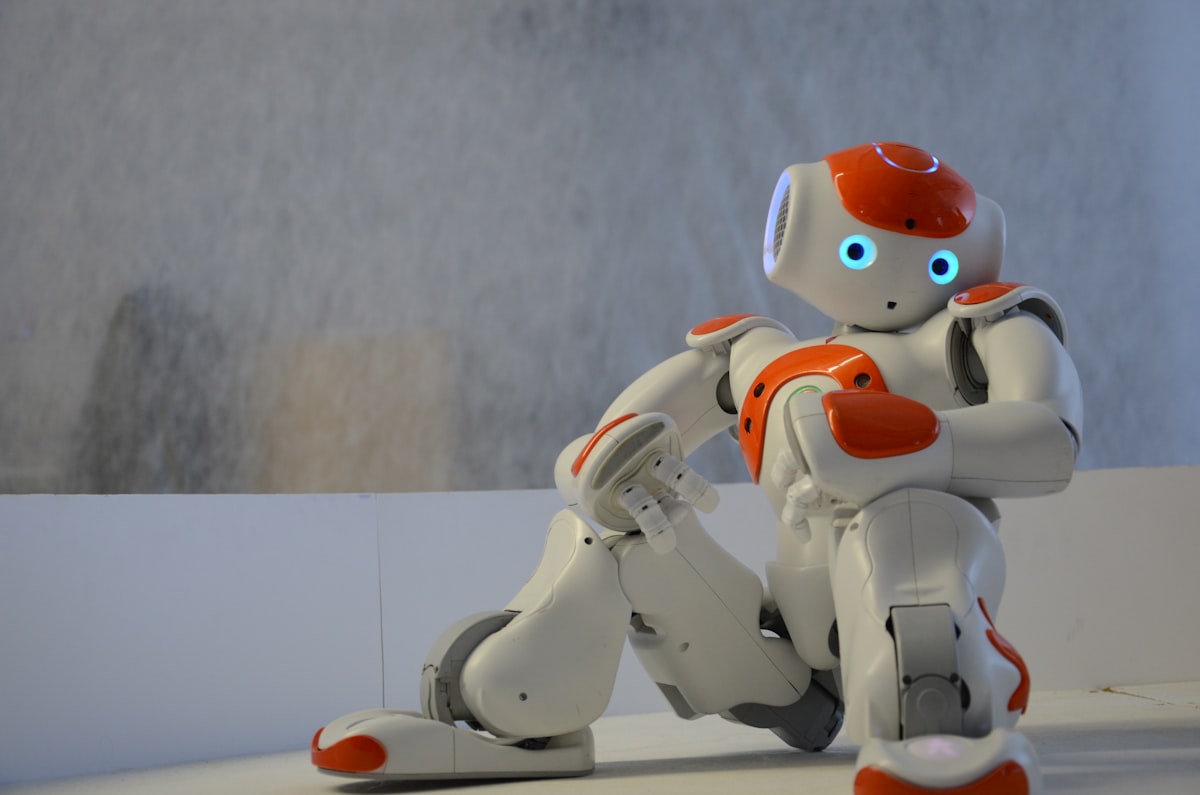Programming Robot Control Systems with AI: A Guide for STEM Students
The field of robotics is rapidly evolving, and at the heart of this evolution lies the integration of artificial intelligence (AI). Traditionally, robot control systems relied on pre-programmed instructions and feedback loops, limiting their adaptability to dynamic and unpredictable environments. Today, ai robotics control is revolutionizing how robots operate, enabling them to learn, adapt, and make intelligent decisions. This blog post explores how STEM students can delve into programming robot control systems with AI, focusing on the challenges, solutions, and practical examples that will shape the future of robotics. This knowledge will equip you with a critical skillset highly sought after in the modern tech landscape.
The Problem: Limitations of Traditional Robotics Control
Traditional robotics control systems, while effective in structured environments, face significant limitations when confronted with real-world complexities. These limitations stem from the rigid nature of their programming and their inability to adapt to unforeseen circumstances. Consider these key challenges:
- Limited Adaptability: Robots programmed with fixed instructions struggle to handle unexpected obstacles or changes in their environment. For example, a robot designed to pick up specific objects might fail if the object's orientation is slightly different than anticipated.
- Complex Programming: Manually programming robots to perform intricate tasks requires extensive expertise and can be time-consuming. Defining every possible scenario and response becomes increasingly difficult as the complexity of the task grows. This is especially true when dealing with unstructured environments.
- Lack of Learning: Traditional robots are unable to learn from their experiences. They perform the same actions repeatedly, regardless of the outcome, which hinders their ability to improve their performance over time. They cannot accumulate knowledge or refine their strategies based on past interactions.
- Difficulty in Handling Uncertainty: Real-world environments are inherently uncertain. Sensors can be noisy, objects can be partially occluded, and lighting conditions can vary. Traditional robot control systems often struggle to cope with this uncertainty, leading to errors and failures.
The Solution: Embracing AI Robotics Control
AI robotics control offers a powerful solution to the limitations of traditional approaches. By incorporating AI techniques, robots can become more intelligent, adaptable, and robust. Here are some key AI methods used in robot control:
- Machine Learning (ML): ML algorithms allow robots to learn from data, enabling them to improve their performance without explicit programming. For instance, a robot can learn to navigate a maze by repeatedly attempting the maze and adjusting its strategy based on its successes and failures. Key algorithms include reinforcement learning, which allows a robot to learn optimal actions through trial and error, and supervised learning, which enables a robot to learn from labeled data.
- Computer Vision: Computer vision techniques enable robots to "see" and interpret their environment. This is crucial for tasks such as object recognition, obstacle avoidance, and navigation. Convolutional Neural Networks (CNNs) are commonly used for image analysis and object detection, allowing robots to identify and interact with objects in their surroundings.
- Natural Language Processing (NLP): NLP allows robots to understand and respond to human language. This is essential for human-robot interaction, enabling users to communicate with robots using natural language commands. Robots can then execute those commands in the real world.
- Path Planning: AI algorithms such as A* search and Rapidly-exploring Random Trees (RRT) can be used to plan optimal paths for robots to navigate complex environments. These algorithms consider obstacles, constraints, and goals to generate efficient and safe trajectories.
- Simultaneous Localization and Mapping (SLAM): SLAM algorithms enable robots to build a map of their environment while simultaneously localizing themselves within that map. This is crucial for autonomous navigation in unknown environments.
For STEM students, understanding these AI techniques is crucial for designing and implementing advanced robot control systems. It allows them to create robots that are not just pre-programmed machines, but intelligent agents capable of adapting to the world around them.
Practical Examples: Applying AI to Robot Control
Let's explore some practical examples of how AI is being used to program robot control systems:
- Autonomous Navigation: Self-driving cars and delivery robots rely heavily on AI for navigation. They use computer vision to perceive their surroundings, machine learning to predict the behavior of other vehicles and pedestrians, and path planning algorithms to navigate complex road networks. Reinforcement learning is also used to train robots to navigate efficiently and safely.
- Industrial Automation: AI is transforming manufacturing by enabling robots to perform complex assembly tasks with greater precision and efficiency. Robots can learn to pick and place objects of varying shapes and sizes, inspect products for defects, and collaborate with human workers in a safe and productive manner.
- Healthcare Robotics: AI-powered robots are being used in healthcare to assist surgeons, provide rehabilitation therapy, and deliver medications. These robots can perform delicate surgical procedures with greater precision than human surgeons, assist patients with mobility impairments, and ensure that medications are delivered accurately and on time.
- Agricultural Robotics: Robots are being used in agriculture to automate tasks such as planting, harvesting, and weeding. These robots use computer vision to identify crops, machine learning to optimize planting and harvesting strategies, and path planning algorithms to navigate fields efficiently.
These examples demonstrate the wide range of applications for AI in robot control. By mastering the fundamentals of AI and robotics, STEM students can contribute to these exciting advancements and shape the future of these industries.
Conclusion: The Future of AI Robotics Control
The integration of AI into robot control systems is revolutionizing the field of robotics, creating opportunities for STEM students to develop innovative solutions to real-world problems. By understanding the limitations of traditional robotics control and embracing AI techniques such as machine learning, computer vision, and NLP, students can design and implement robots that are more intelligent, adaptable, and robust. The future of ai robotics control is bright, and STEM students who develop expertise in this area will be well-positioned to lead the way in this exciting and rapidly evolving field.
